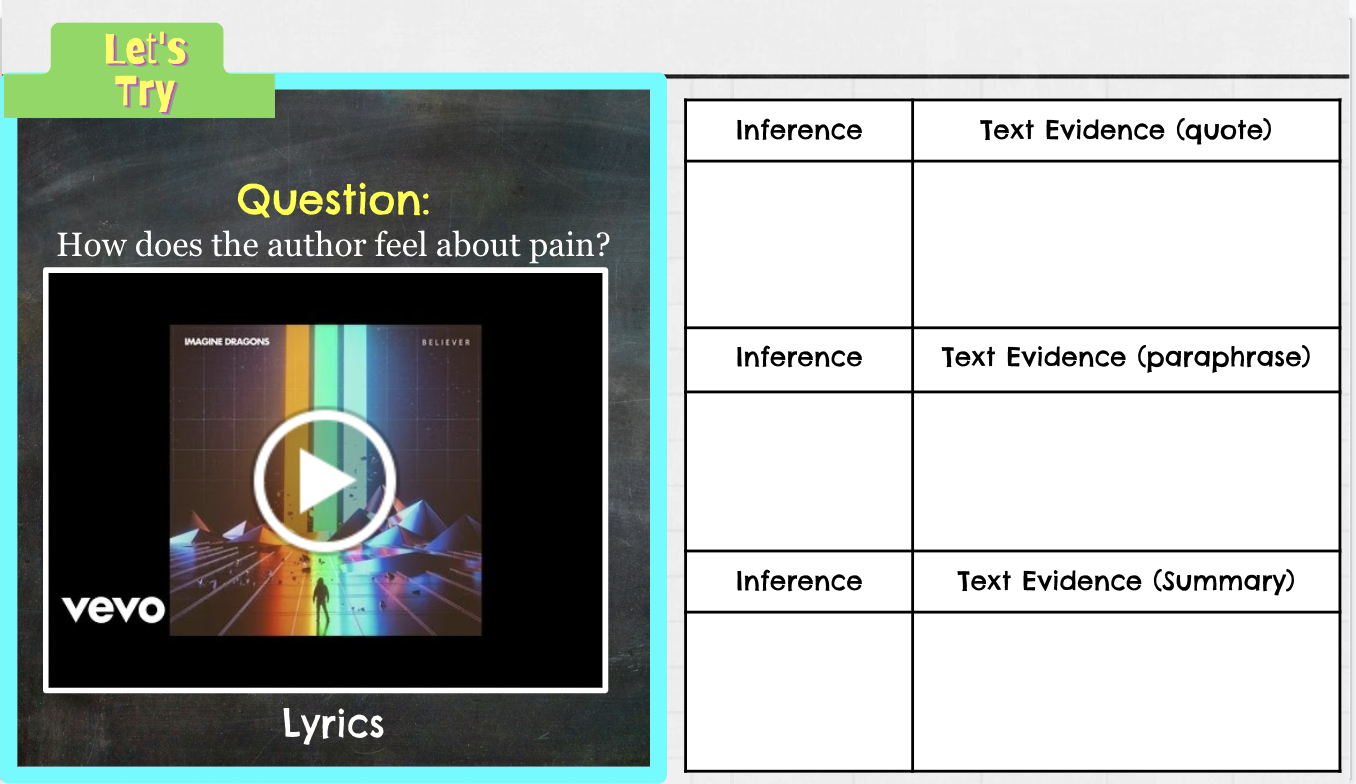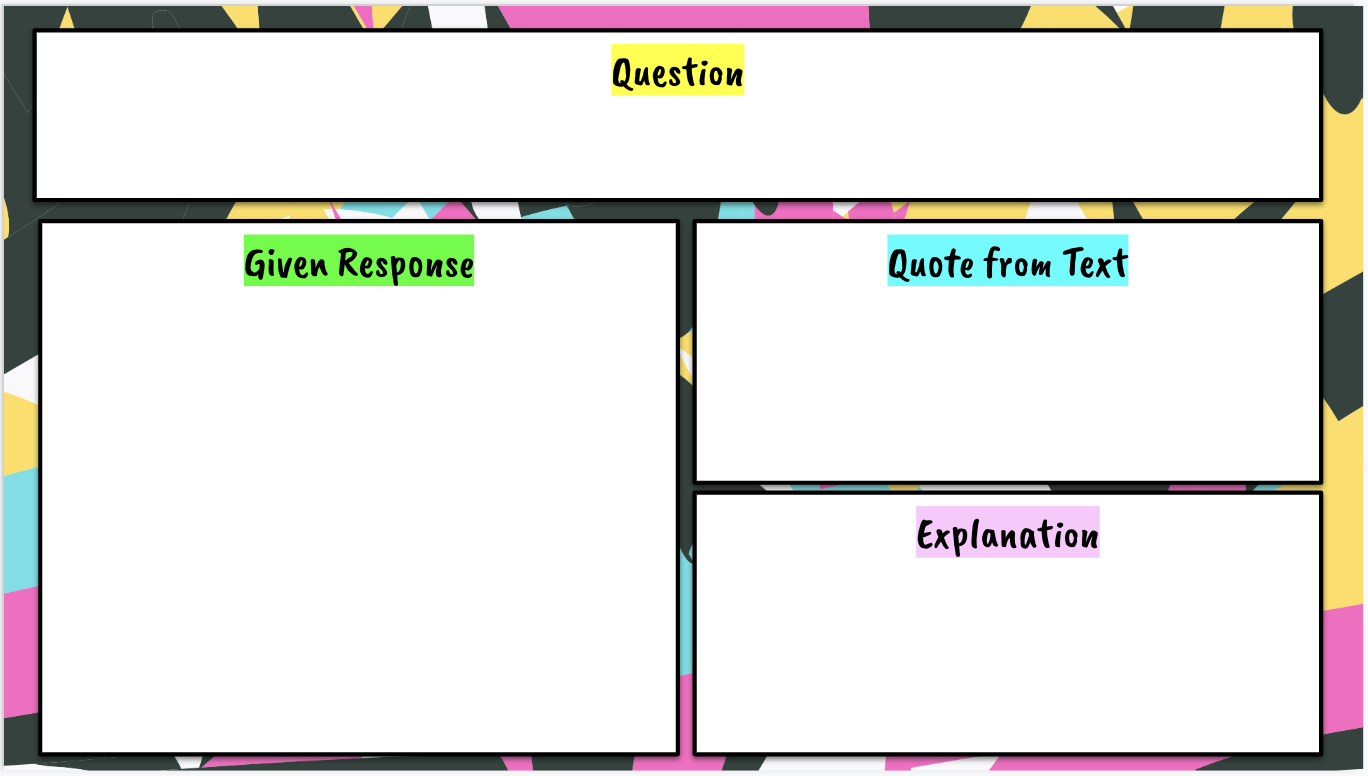3 Strategies to Help You Teach Text Evidence
Before you read any further, just know I blame this on being a 90s girl with questionable taste. If you’re not a fan of old-school hip hop with dirty lyrics, then this post is not for you.
That being said…
Whenever I ask students to back their answers up, the song that automatically pops into my head is Juvenile’s “Back That Azz Up.”
Immediately, I change the words to make it school appropriate.
Wow, that's a great start, but ya need to back that answer up.
You’re looking really smart, but ya need to back that answer up.
I throw in a couple of shoulder pops and moonwalking to add to the awkwardness of the moment.
Of course, 99% of my students have no idea what I’m referring to, but they cringe and laugh at my weirdness, and I get my point across.
Basic answers are a good start, but they need text evidence in order to take it to the next level.
If your brain is like mine, you can bust into Ciara’s “Level Up” chorus at this moment.
Here are a couple of activities you can do to help your students “Level Up” by adding the text evidence needed in order to write a meaningful response.
Take time to teach about text evidence.
Explain why it is important (it adds support so their answer is not just an opinion) and the three types of text evidence (quotation, paraphrase, and summary) students can use in their responses.
With this mini-lesson, I provide students with sentence stems for in-text citations. This ensures students do not just randomly place evidence without a lead in.
We practice using the three types of evidence by reading the lyrics to “Believer” by Imagine Dragons and answering the question, How does the speaker feel about pain? Students have to answer the question three time. Each time using a different type of text evidence.
After we do this as a class, I set up text evidence stations around the room. Each station has song lyrics, a text dependent question, and the type of evidence students need to use to answer the questions.
2. Build a Response Tower with Legos!
I used this as a way for my students to visualize how the pieces (basic answer, personal thoughts, text evidence, and explanation of evidence) go together to form a strong unit. I use the RTQT method, but you can easily adapt this to RACE or ACES. It is really all the same concept.
All you need is six rectangle Lego bricks for each group. (I ordered these knock off ones from Amazon)
Label each lego with the different piece of a response.
Each students is responsible for a color. As they write their part of the response, they constructed their group’s response tower.
For your hands-on and visual learners, it’s a great way for students to see how each piece is important to creating a strong and cohesive response.
3. Have a Quote Battle!
If you need your students to practice picking relevant quotes, this is the activity for you! Students work in groups to find the best quote to go with the answer given.
How it works:
After reading a selection with your students, write a text-based question. For example, What can you infer about ____ based on this chapter?
You will provide students with the basic answer. If you follow the RTQT method like I do, you will provide students with the first two sentences.
Assign students to small groups.
If you’re into competition, really play it up with your students that they are going to battle for the best text evidence to support the answer. You can even have a Quote Battle prize ready. I like having these small trophies on hand for activities like this. You can give one to the winning group. Everyone can sign it, and you can display it in your classroom.
Each group has 10-15 minutes to find what they think is the best text evidence to support the answer.
To add a little bit of fun, you can play the Rocky montage song while they are completing the assignment.
After they copy down the text evidence, they have to write a sentence explaining how the evidence supports the answer.
Each group will share their responses with the class.
You will determine a winner. If groups picked the same evidence, you can select the winner based on their explanation.
This activity helps your students leave the random and irrelevant quotes out of their responses, and demonstrates the value in selecting text evidence that strengthens their answers.
Resources to help you:
Text Evidence Mini Lesson on TpT
Mini lesson with notes, instructional video, and practice activities.
ELA UNLIMITED
If you’re looking for more text evidence resources, check out ELA Unlimited.
There you will find the text evidence mini-lesson, quests, RTQT resources, Posters, Quote Battle Slides, final assessment, and a ton of other great activities for middle school ELA!




